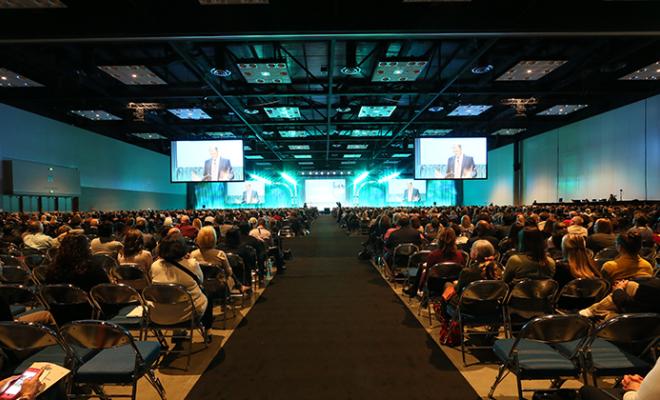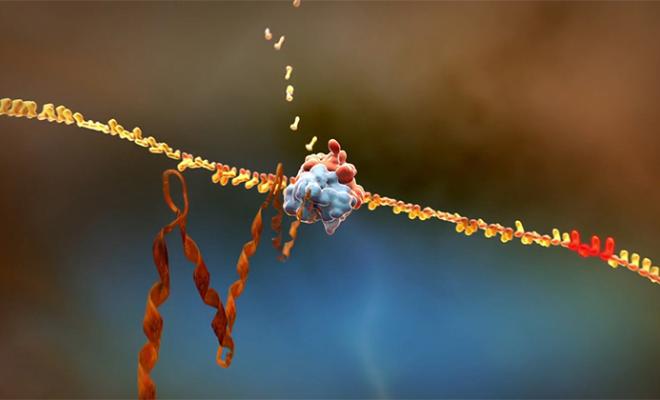When the Path to a Cure initiative was first announced in 2019, as a patient I was excited for the potential it held for significant advancement in treatments for CF. But as a scientist, I also knew that developing new therapeutics is extremely challenging and wouldn't happen quickly or by just one group. There needed to be advancements not only in understanding CF biology, but also in genetic therapy and delivery technologies to ensure the therapies reach the correct cells in the body.
After hearing the second plenary for the 2021 North American Cystic Fibrosis Conference, “Working Together to Pave the Path to a Cure,” I am incredibly impressed with the level of support the Cystic Fibrosis Foundation is providing, the collaboration between the Foundation, academia, and industry, and the tangible progress that is being made in the development of new treatments for everyone with CF, regardless of their mutations.
This plenary was given by three scientists from the CF Foundation Therapeutics Lab (CFFT lab). Rather than recapping the presentation, I wanted to share the key concepts that resonated with me from each of the scientists' presentations.
Watch the full plenary on Facebook Live.
Different Companies Working on Similar Approaches
From CFFT Lab Director Dr. Martin Mense's introduction, it was clear that the Path to a Cure initiative is already off to a fast start with 25 programs having been funded so far to support research and drug development for next-generation therapies.
I was pleased to hear there are different companies working on similar approaches, which helps assure a greater chance of success rather than betting on only one company, one technology, or one approach.
As someone who has benefited greatly from taking Trikafta® for the past two years, I'm glad to report that scientists are collaborating to try and bring this therapy to even more people through theratyping. Theratyping refers to lab testing to see which mutations are responsive to modulators. As an example of the power of combining efforts across groups, the theratyping work from the Foundation's lab and two other academic labs complemented Vertex's successful application to the U.S. Food and Drug Administration to extend the use of modulators to additional patients in December 2020. The data these labs are generating to demonstrate how other patients with rare mutations could benefit from modulators may have a profound impact on the lives of CF patients with mutations not currently approved for Trikafta.
I also appreciated hearing about the different companies working on drugs to treat nonsense mutations since I have a nonsense or “stop” mutation and have previously been part of a clinical trial for a drug to help bypass premature stop signals in the production of the CFTR protein so that a full protein can be made. Reinforcing the strategy to have different companies working on similar approaches, Path to a Cure has funded three parallel approaches -- to repair the broken CFTR protein, restore CFTR protein when none exists, and fix or replace the underlying genetic mutation to address the root cause of CF. Plus the Foundation's lab is contributing additional work to support new therapeutic development. Because nonsense mutations are the largest class of mutations that do not respond to current modulators, the impact of a successful therapy would be huge.
A “One-Size-Fits-All” Approach
Before Dr. Hillary Valley's gene editing presentation, I knew very little about the concept of super exons -- adding a long section of DNA to correct most or all of the mutations in the CFTR gene -- and how they could work to restore a normal CFTR protein regardless of someone's mutations. I think it's an exciting technology to potentially restore CFTR function, especially since instead of needing to develop hundreds of individual gene editing therapeutics, this could be a “one-size-fits-all” approach. I also appreciated her comments that most scientific advancements don't happen all at once, but through incremental discoveries over time. Our work won't be done when we discover a gene editing technology that works. We will have to discover over time how to deliver that technology to the correct cells.
Targeting the Correct Cells
Researchers are actively exploring approaches to deliver therapies to the appropriate cell types. Dr. Mense explained that Path to a Cure is funding research for the development of new viral vectors and new formulations of lipid nanoparticles -- fat particles -- and natural vesicles -- small, fluid-filled sacs -- to deliver the genetic cargo to the appropriate cells. Advances in these areas could be transformative not only for CF, but also other genetic diseases where similar approaches can lead to new therapies.
During Dr. Jed Mahoney's presentation, he described the different cell types that make up the surface of the lung and showed recently published data that quantifies the level of CFTR gene expression within each different cell type. This information is critical to understand which cell types are best to target with genetic therapies. It seems clear that long-term gene editing therapies will likely need to target the basal cells since they are the stem cells for other types of lung cells. Because of their protected location in the lung epithelium, it is currently a significant challenge to target these cells.
As someone who has worked on multiple biotech and pharmaceutical company collaborations to discover new drugs, I have found that working together effectively between companies and academic labs can be the difference between research that is successful and research that does not go forward. Dr. Mense elegantly stated that a cure is not likely to be achieved in isolation by a small team, but instead requires a large group working together.
I am excited to see how Path to a Cure continues to expand the scientific frontier for the next generation of CF therapeutics.
The fact that the Foundation is not only funding many parallel approaches, but also using resources from the Foundation's lab to help directly support the scientists in academia and industry is inspiring and shows the Foundation's commitment to finding better therapies in the near term and eventually the hope of a cure for all people with CF.
Interested in sharing your story? The CF Community Blog wants to hear from you.






